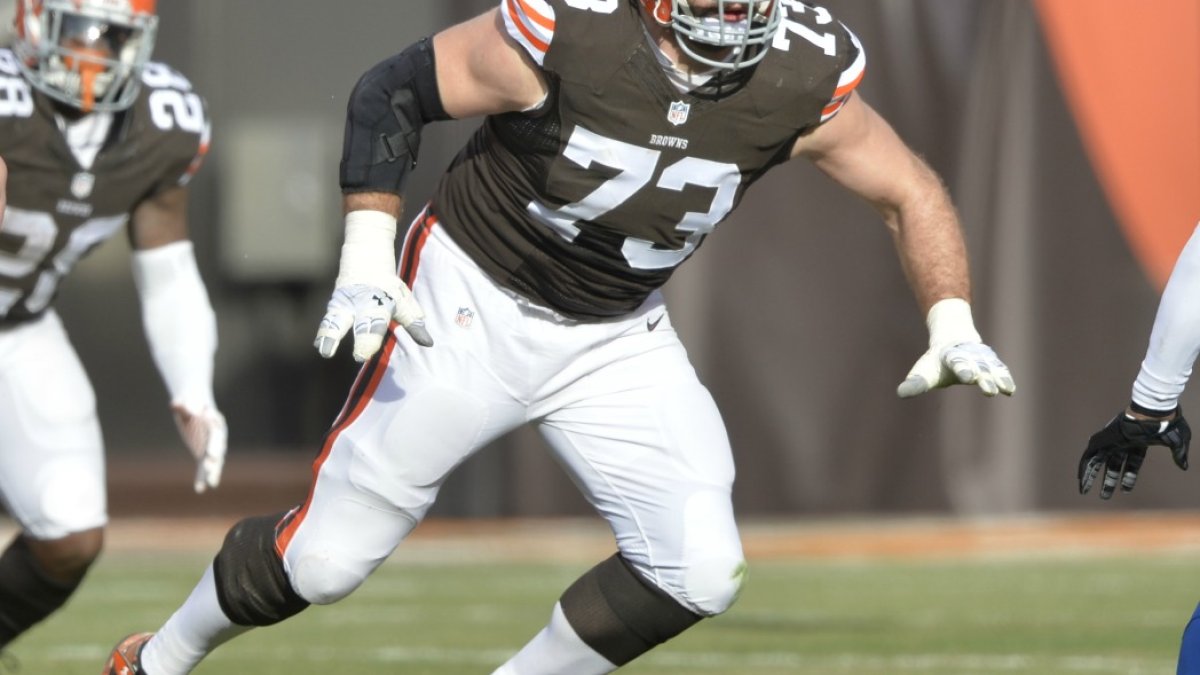The Cleveland Browns are averaging 3.4 yards per carry on the ground, and have surrendered 27 sacks across both starting quarterbacks—but PFF just ranked their offensive line as the second-best unit in the league through the first half of the season.
Why?
Every single starter along the line has a positive grade, which looks crazy when their running game can’t get anything done, and their quarterbacks have been sacked more than all but four other teams.
Offensive lines are far too often perceived to be the only component in blocking for both the run and pass; in reality, they are only the most important part of a bigger puzzle. Backs, tight ends, and receivers all play a significant role, especially in certain blocking schemes.
When you add up all the blocking grades by players at positions other than the offensive line, Cleveland doesn’t just rank towards the bottom—they're dead last in the NFL, with a cumulative blocking grade of -29.1, three times worse than even “bad” teams, and five times worse than the league average.
For as well as Gary Barnidge has been playing as a receiver, he has been little short of disastrous as a blocker—and Jim Dray has been little better in his snaps. FB Malcolm Johnson is our lowest-graded player at his position. No blocking scheme in football can get it done just with the five guys along the line—even a light defensive front has six guys in the box, one more than they can pick up—so you need the other players involved in the run game to hold up their end of the bargain to have any success on the ground.
Consequently, the Browns are a team that likes to run outside zone, and can’t reliably get to the edge. Their average yards per carry around right end is 2.7; to the left, it’s just 1.1. Running either side of G John Greco, by contrast, is yielding an average of 4.0 yards per carry.
When they run outside zone, the Browns have gained just 104 yards on 41 attempts (2.5 yards per carry), compared to more than a full yard better when they run inside. When they run outside zone, the blocking is generating an average of just 0.49 yards before the running back is contacted, which is 24th in the NFL. Inside, that jumps more than a yard, despite poor lead blocking.
When you look at the passing game, the offensive line is again being undone by the other elements in the equation. Josh McCown has the 10th-highest percentage of passes that take 2.6 seconds or more, and Johnny Manziel is even worse at fourth-highest, with 55.6 percent of his passes taking longer than 2.5 seconds. The offensive line is simply being asked to pass block for longer than most teams.
The team runs the sixth-most seven-step drops, and though the sacks are high, we have charged seven of those sacks to the Cleveland quarterbacks, four more than to any single lineman. Despite blocking in an offense that asks a lot of the linemen, we have only charged them with nine of the 27 sacks Cleveland has surrendered. Tight ends, running backs, and quarterbacks have been at fault for 13 of them (the remaining being some form of unblocked or clean-up pressure, which will not be charged to an offensive player).
The offensive line alone has surrendered only 82 total pressures, 47 fewer than the worst unit in the league (San Diego).
If you look only at the success of the Cleveland running backs and the number of times their QBs have hit the turf, you’d think the line has been doing a terrible job—but the tape places the finger of blame elsewhere on most of those plays. Cleveland’s offensive line has been grading well overall, with Joe Thomas, in particular, a perennial stud. The Browns’ issues on offense are because they’re not getting help from anywhere else.



 © 2024 PFF - all rights reserved.
© 2024 PFF - all rights reserved.